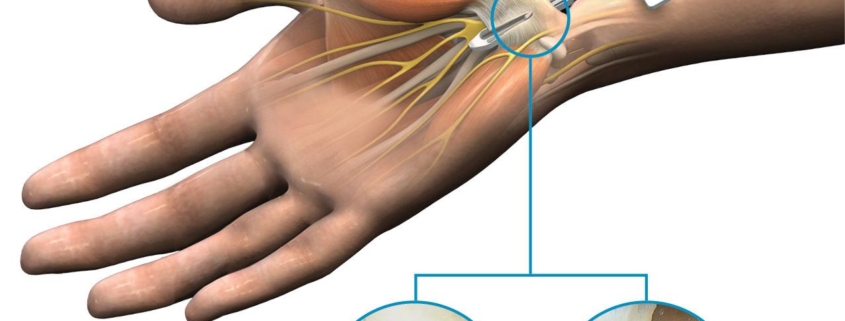
Endoscopic Carpal Tunnel Release
Overview
Endoscopic Carpal Tunnel Release (ECTR) is a minimally invasive surgical procedure aimed at relieving the symptoms of carpal tunnel syndrome. Carpal tunnel syndrome is a prevalent health issue impacting millions of individuals worldwide. It’s primarily characterized by pain, numbness, and tingling sensations in the hand and arm.
Types
ECTR is primarily used for carpal tunnel syndrome and there aren’t any distinct subtypes. However, the procedure can be categorized based on the number of incisions made: single-portal or two-portal procedure. A specialist will determine the most suitable type depending on the severity of your condition.
Causes
Carpal tunnel syndrome is typically caused by pressure on the median nerve that runs through the length of the arm, goes through a passage in the wrist called the carpal tunnel, and ends in the hand. The excess pressure is usually caused by swelling, which narrows the tunnel, thereby squeezing the nerve. Common risk factors include obesity, rheumatoid arthritis, diabetes, and jobs or activities that involve repetitive motion of the hand and wrist.
Symptoms
Common symptoms associated with carpal tunnel syndrome include:
– Tingling or numbness in your fingers or hand, particularly the thumb, index, middle or ring fingers.
- Pain in your fingers or hand, which may extend up into your arm.
– Weaker grip strength and a tendency to drop objects held in the hand.
– Constant feeling of needing to “shake out” your hand and fingers.
Diagnosis
Carpal tunnel syndrome diagnosis includes a mix of physical exams, history analysis, and tests. It often begins with a discussion about your symptoms and medical history. Your doctor may then examine your hand, wrist, shoulders, and neck to rule out other possible conditions. You might be asked to perform the Phalen’s maneuver or Tinel’s sign test, which can provoke carpal tunnel symptoms. Electrical tests and ultrasound imaging might also be conducted to further confirm the diagnosis.
Treatment Options
Prior to considering ECTR, more conservative treatments are usually recommended. This may include splinting or bracing the wrist, taking over-the-counter medications to alleviate pain and inflammation, or physical therapy. If these treatments don’t provide adequate relief, a corticosteroid injection might be administered. If the conservative approaches prove ineffective, surgical options such as ECTR are considered.
With ECTR, your surgeon will use a special instrument called an endoscope, which has a tiny camera attached to it that allows them to see inside your carpal tunnel. This method involves fewer and smaller incisions providing quicker recovery times and less post-operative discomfort compared to traditional open surgery.
Living with Endoscopic Carpal Tunnel Release
After undergoing ECTR, it’s important to follow all postoperative instructions given by your doctor, such as keeping your hand elevated and moving your fingers to reduce swelling and enhance circulation. Physical therapy and at-home exercises might also be recommended to restore wrist strength.
When to Seek Help
You should seek immediate medical help if you experience persistent symptoms such as pain, weakness, or numbness in your hand and wrist, or if you have difficulty gripping objects. These could be signs of carpal tunnel syndrome, which, if left untreated, can lead to permanent nerve damage and worsening symptoms.
Bottom line: It’s crucial to consult with your healthcare provider about any recurring wrist or hand discomfort. Early detection and treatment of carpal tunnel syndrome, including procedures like ECTR, can greatly improve long-term outcomes and relieve your discomfort.
